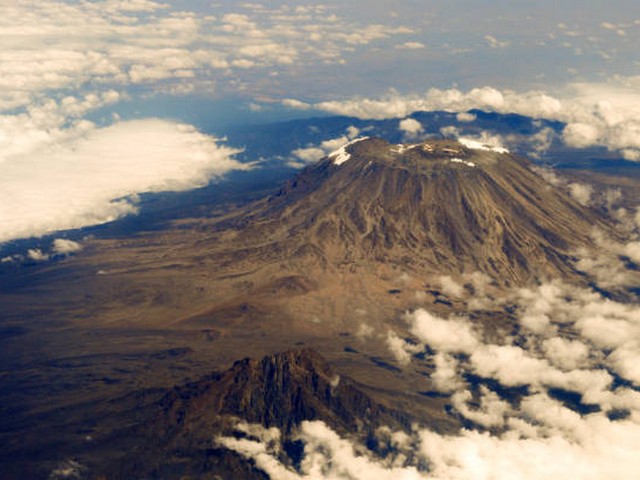How To Prevent Altitude Sickness On Kilimanjaro: Your Guide to a Safe and Memorable Climb
Summiting Mount Kilimanjaro, the roof of Africa, is a dream for many adventurers around the world. As you envision standing atop the majestic peak, watching the sunrise gleam over the vast African landscape, it’s important to plan not only for the physical climb but also for your health. Among the challenges of this great adventure is the risk of altitude sickness, a condition that can affect even the most experienced climbers. Here at Kilimanjaro Centre for Trekking and Ecotourism (KCTE), we are dedicated to ensuring that your journey up Kilimanjaro is not only unforgettable but also safe. In this blog post, we will share essential tips on how to prevent altitude sickness on Kilimanjaro, ensuring your trek is as exhilarating as it is secure.
Understanding Altitude Sickness
What is Altitude Sickness?
Altitude sickness, also known as acute mountain sickness (AMS), can occur when individuals ascend too quickly to high elevations where the air is thinner and contains fewer oxygen molecules. Symptoms might include headaches, nausea, dizziness, and fatigue. Without proper acclimatization and care, altitude sickness can escalate to more severe conditions, such as HAPE (High Altitude Pulmonary Edema) or HACE (High Altitude Cerebral Edema), both of which require immediate medical attention.
Why Kilimanjaro Poses a Risk
Climbing Kilimanjaro exposes trekkers to rapid altitude changes. The trek involves moving from a moderate elevation of about 1,800 meters (5,900 ft) to the peak at 5,895 meters (19,341 ft). This ascent can be too rapid for some, making altitude sickness a key concern.
Preparing for Your Climb
Choose the Right Route
Kilimanjaro offers several routes, each varying in length, difficulty, and acclimatization profiles. Longer routes like the Lemosho or Northern Circuit offer better acclimatization opportunities due to their gradual ascent and "climb high, sleep low" approach. Booking your climb with KCTE ensures you get expert advice on choosing the best route that suits your physical fitness and experience level.
Train Adequately
Preparing your body for Kilimanjaro is crucial. Focus on cardiovascular fitness, strength training, and hiking in varied terrain. The better your fitness level, the more efficiently your body can cope with decreased oxygen.
On the Mountain: Acclimatization and Health Tips
Pace Yourself
“Pole pole” (slowly, slowly in Swahili) is the mantra on Kilimanjaro. Maintaining a slow, steady pace helps your body adjust to the altitude gradually, reducing the risk of AMS.
Drink Plenty of Water
Hydration is key to reducing altitude sickness. Aim to drink at least three to four liters of water daily. Avoid or limit diuretics like caffeine and alcohol, which can dehydrate you.
Eat Well
Maintaining a balanced diet rich in carbohydrates provides the necessary energy for the climb and helps in acclimatization. KCTE provides nutritious meals tailored to optimize your energy and overall health on the mountain.
Sleep and Rest
Adequate rest helps the body to recover and acclimatize. Even if sleeping becomes difficult as you ascend, resting and keeping warm will aid your body in adjusting to the altitude.
Listen to Your Body
Recognizing the early symptoms of altitude sickness and responding promptly is crucial. Inform your guide about any discomfort experienced, as KCTE’s experienced guides are trained to distinguish between normal fatigue and symptoms of AMS.
Medication and Supplementary Oxygen
Consult with a Doctor
Before embarking on your journey, consult with a healthcare provider about medications like Acetazolamide, which can aid in acclimatization if taken before and during your trek.
Consider Supplemental Oxygen
While not routinely necessary, having supplemental oxygen available can be a safety net that KCTE provides for emergency use, ensuring peace of mind throughout your trek.
After Your Climb
Descend to Heal
If symptoms of altitude sickness appear, the most effective treatment is to descend. KCTE guides are skilled in assessing the situation and will prioritize your safety, organizing an immediate descent if required.
Celebrate Your Achievement
Reaching the summit of Kilimanjaro is a monumental achievement. Take time to celebrate your success, knowing you’ve taken the right steps to prevent and manage altitude sickness effectively.
FAQs: Preventing Altitude Sickness on Kilimanjaro
Q: How long does it take to adjust to altitude on Kilimanjaro?
A: Adjustment varies, but choosing a longer route (7-9 days) provides ample time for acclimatization.
Q: Can I climb Kilimanjaro without prior high-altitude experience?
A: Yes, many first-time high-altitude climbers succeed on Kilimanjaro. Proper preparation, choosing the right route, and following the tips above increase your chances of a successful climb.
Q: What are the signs that I need to descend?
A: Severe headaches, nausea, dizziness, or fatigue that worsens or does not improve with medication and rest are signs you need to descend immediately.
Climb with Confidence
Embarking on the Kilimanjaro journey is a bold and inspiring feat. With the right preparation and by choosing Kilimanjaro Centre for Trekking and Ecotourism (KCTE), you are setting yourself up for a successful and memorable climb. Remember, preventing altitude sickness on Kilimanjaro isn’t just about reaching the summit; it’s about enjoying the journey safely and joyfully. Ready to conquer Kilimanjaro? Book your climb with KCTE today and step into the adventure of a lifetime.




